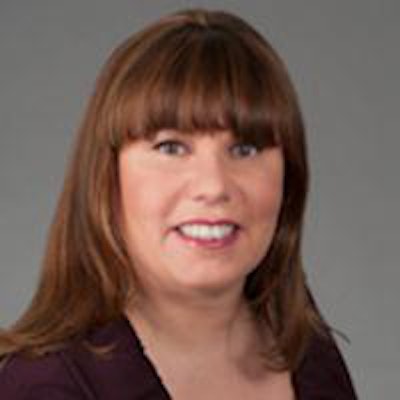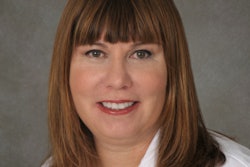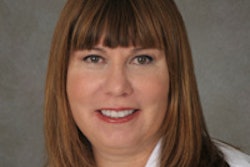
I have a confession -- a public and difficult confession to make, a shameful secret to share. I have never had a mammogram. I wish I could say it is because I am not yet 40, but that's not the case.
As a radiologist, I felt morally bound to support mammography screening for others -- after all, the great luminaries in our field, scholars whom I greatly respect, told us it was important. If Dr. Daniel Kopans thought it was important, who was I to argue?
Way back, I used to have lunch with him. I am sure he does not remember me, as I was an insignificant member of the lunch group, a fellow from another division, graced with his presence because my chief was his friend. I tagged along, cowed by greatness.
 Dr. Mary Morrison Saltz.
Dr. Mary Morrison Saltz.
Years later, I heard him speak at the RSNA conference about tomosynthesis. It is really possible to slice through the breast, like dissecting a loaf of bread? Way cool.
But the technological advances in the field still beg the question of screening mammography: Does it really affect population health? Can we ignore population statistics? Breast cancer epidemiology?
Treatment for breast cancer is not benign. It is not just expensive, it is a difficult process, both physically and emotionally. The role of mammography in improving mortality from breast cancer has been controversial, dating back to xeromammography, which was finally relegated, in my first practice, to a technology dedicated to finding nonradio-opaque splinters in the skin.
From the popular press to scientific studies, mammography screening has remained, over decades, at the forefront of public health controversies.1,2,3 The popular press has often highlighted inconsistencies in recommendations around screening mammography.
Concern about the efficacy of breast screening continues. This spring, the New England Journal of Medicine published a piece explaining why a Swiss medical advisory group no longer supports screening mammography.4 This followed a very controversial debate sparked in 2012 by another pivotal NEJM piece that threw significant doubt on mammography as a panacea to breast cancer screening.5
Given that the ability to collect and model population-wide data is becoming a reality, it will be imperative to leverage this information to see not only how to increase screening compliance,6 but also where we can cut out ineffective or unneeded tests that cost our health system dearly, not only in dollars but in the emotional havoc the wrong interventions make.
Even if mammography finds a "cancer," not all cancers act the same way, and overtreatment is an increasing concern,7 for not every cancer will cause significant morbidity nor mortality. Data analysis across large numbers of people over time may well allow us to target patients who will actually benefit from finding a cancer on screening mammography, and we could increase screening's efficacy, detecting cancers with potential significant adverse effect on health. Significant cost savings would result, not only by reducing unnecessary screening but also by reducing the even greater cost of treating cancers that may never have actually had an adverse effect.
Why have I never had a mammogram? Well, I was never sure what I would do with the information, were a small cancer detected. Detecting something small, with no definite benefit in treatment, always seemed scary. Did I really have the guts to ignore exhortations to receive cancer treatment?
I know I could not withstand the pressure, and that were a diagnosis made, potentially difficult and debilitating treatment would ensure. I remembered all too well learning as an impressionable medical student that 90% of 90-year-old men had occult prostate cancer, and almost all died of other causes. This logic seemed to me to apply to breast cancer as well.
Now, there seems to be more and more support for this point of view. Lead-time bias may be more important than sometimes thought, regarding mammography screening and breast cancer.
Even in the hands of experts, mammography is an art, supported by science. That is why it has been imperative to have only the best of the best highly trained radiologists interpret mammograms. Many of us can learn the science, but the art is gained through practice and careful appreciation for detail.
As technology improves with the advent of advances such as breast tomosynthesis, we will be able to diagnose cancers more accurately, certainly moving up the receiver operator characteristics (ROC) curve, and perhaps allowing more imagers to be able to interpret mammography. Yet does this improved imaging really move us forward along the road to improved population health?
So when Bleyer and Welch came out with their 2012 study in NEJM showing that lead times in detection of cancer does not affect population outcomes, and that the real and evidently improved mortality came from better treatment, it seemed interesting to look more closely at what defines a good screening test. Back in 1968, the World Health Organization published guidelines that still apply today:
- The condition should be an important health problem.
- There should be a treatment for the condition.
- Facilities for diagnosis and treatment should be available.
- There should be a latent stage of the disease.
- There should be a test or examination for the condition.
- The test should be acceptable to the population.
- The natural history of the disease should be adequately understood.
- There should be an agreed policy on whom to treat.
- The total cost of finding a case should be economically balanced in relation to medical expenditure as a whole.
- Case-finding should be a continuous process, not just a "once and for all" project.8
When we look at these guidelines, one could certainly argue that we are unsure about the biology of the latent stage of breast cancer (No. 4), and we are not sure about the natural history of the disease (No. 7).
This said, it makes sense to look closely at mammography to make sure it has an overall positive impact on population health and does not cause more harm than good. Population health outcomes, based on current understanding of the natural history of disease, are the litmus tests for the efficacy of screening exams and health policy. We must be able and willing to revise our guidelines as more data are accrued, and change policies as needed to keep up with the science of cancer, its behavior, and its treatments.
So, before I have a mammogram, is there firm evidence that if we find a cancer, early detection and treatment will bring me a longer and better life?
What do you think?
References
- Richardson JD, Cigtay OS, Grant EG, Wang PC. Imaging of the breast. Med Clin North Am. 1984;68(6):1481-1514.
- Kopans DB. Do not jump too quickly to conclusions. Breast Cancer Res. 2012;14(4):108.
- Gotzsche PC, Olsen E. Is screening for breast cancer with mammography justifiable? Lancet. 2000;355:129-134.
- Biller-Adorno N, Juni M. Abolishing mammography screening programs? A view from the Swiss Medical Board. N Engl J Med. 2014;370:1965-1967.
- Bleyer A, Welch G. Effect of three decades of screening mammography on breast-cancer incidence. N Engl J Med. 2012;367:1998-2005.
- Gold A. UNC Health Care leverages big data to boost bottom lines. FierceHealthIT. November 19, 2013. http://www.fiercehealthit.com/story/unc-health-care-leverages-big-data-boost-bottom-lines/2013-11-19. Accessed on May 21, 2014.
- Esserman L, et al. Overdiagnosis and overtreatment in cancer: An opportunity for improvement. JAMA. 2013;310(8):797-798.
- Wilson JMG, Jungner G. Principles and Practice of Screening for Disease. Geneva: World Health Organization; 1968. Public Health Papers, No. 34.
Dr. Mary Morrison Saltz is a board-certified diagnostic radiologist. She is currently chief clinical integration officer for community practice initiatives at Stony Brook Medicine and a member of their department of radiology. She is also CEO of Imagine Image Innovation, a company that uses big data to improve delivery of radiology services.
She has also served as chief medical officer for Hospital Radiology Partners and as radiology chair and service chief at hospitals in Florida, Ohio, and Georgia. Dr. Saltz is a member of the American College of Physician Executives, the American College of Radiology, and RSNA, and she sits on the Citizens Advisory Council of the Duke Cancer Institute.
A hands-on leader, Dr. Saltz's expertise is working hand-in-hand with hospital administration to guide radiology teams to success. Dr. Saltz has led quality assurance programs in Florida and Ohio and she served as chief quality officer for community practice initiatives at Emory Healthcare. She also has more than 20 years of private-practice experience.
She is a graduate of McGill University, with a Bachelor of Science in Human Genetics, and Duke University, where she obtained her Doctor of Medicine. Her postgraduate education included a residency at Boston University, where she served as chief resident, and a fellowship in interventional abdominal radiology at Massachusetts General Hospital.
The comments and observations expressed herein do not necessarily reflect the opinions of AuntMinnie.com.



















